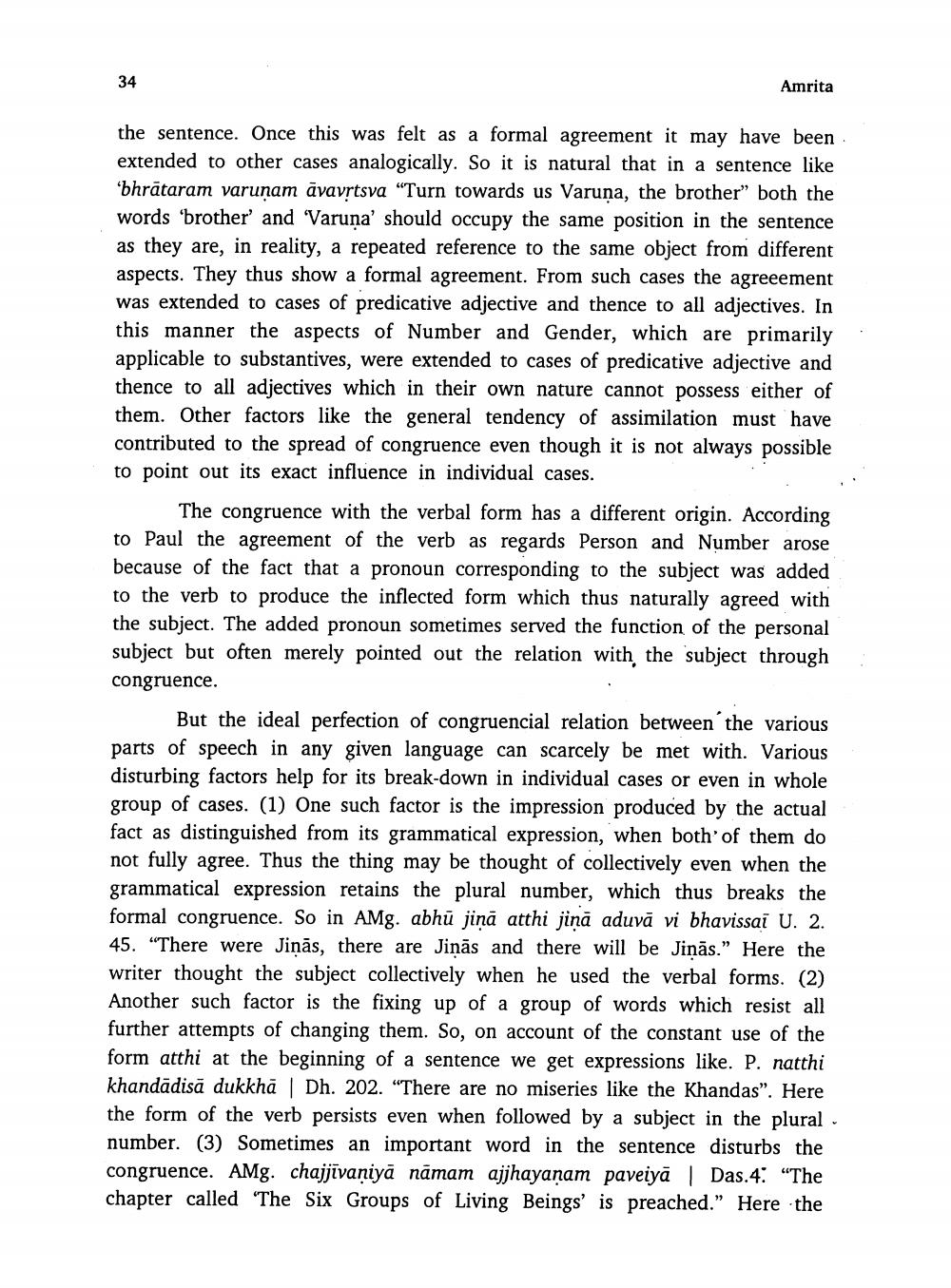________________
34
Amrita
the sentence. Once this was felt as a formal agreement it may have been extended to other cases analogically. So it is natural that in a sentence like bhrātaram varunam avavítsva "Turn towards us Varuna, the brother” both the words 'brother and 'Varuna' should occupy the same position in the sentence as they are, in reality, a repeated reference to the same object from different aspects. They thus show a formal agreement. From such cases the agreeement was extended to cases of predicative adjective and thence to all adjectives. In this manner the aspects of Number and Gender, which are primarily applicable to substantives, were extended to cases of predicative adjective and thence to all adjectives which in their own nature cannot possess either of them. Other factors like the general tendency of assimilation must have contributed to the spread of congruence even though it is not always possible to point out its exact influence in individual cases.
The congruence with the verbal form has a different origin. According to Paul the agreement of the verb as regards Person and Number arose because of the fact that a pronoun corresponding to the subject was added to the verb to produce the inflected form which thus naturally agreed with the subject. The added pronoun sometimes served the function of the personal subject but often merely pointed out the relation with the subject through congruence.
But the ideal perfection of congruencial relation between the various parts of speech in any given language can scarcely be met with. Various disturbing factors help for its break-down in individual cases or even in whole group of cases. (1) One such factor is the impression produced by the actual fact as distinguished from its grammatical expression, when both of them do not fully agree. Thus the thing may be thought of collectively even when the grammatical expression retains the plural number, which thus breaks the formal congruence. So in AMg. abhū jiņā atthi jiņā aduvā vi bhavissai U. 2. 45. "There were Jinās, there are Jinās and there will be Jinās." Here the writer thought the subject collectively when he used the verbal forms. (2) Another such factor is the fixing up of a group of words which resist all further attempts of changing them. So, on account of the constant use of the form atthi at the beginning of a sentence we get expressions like. P. natthi khandādisă dukkha | Dh. 202. “There are no miseries like the Khandas". Here the form of the verb persists even when followed by a subject in the plural - number. (3) Sometimes an important word in the sentence disturbs the congruence. AMg. chajjīvaniyā nāmam ajjhayanam paveiya | Das.4: "The chapter called 'The Six Groups of Living Beings' is preached.” Here the




